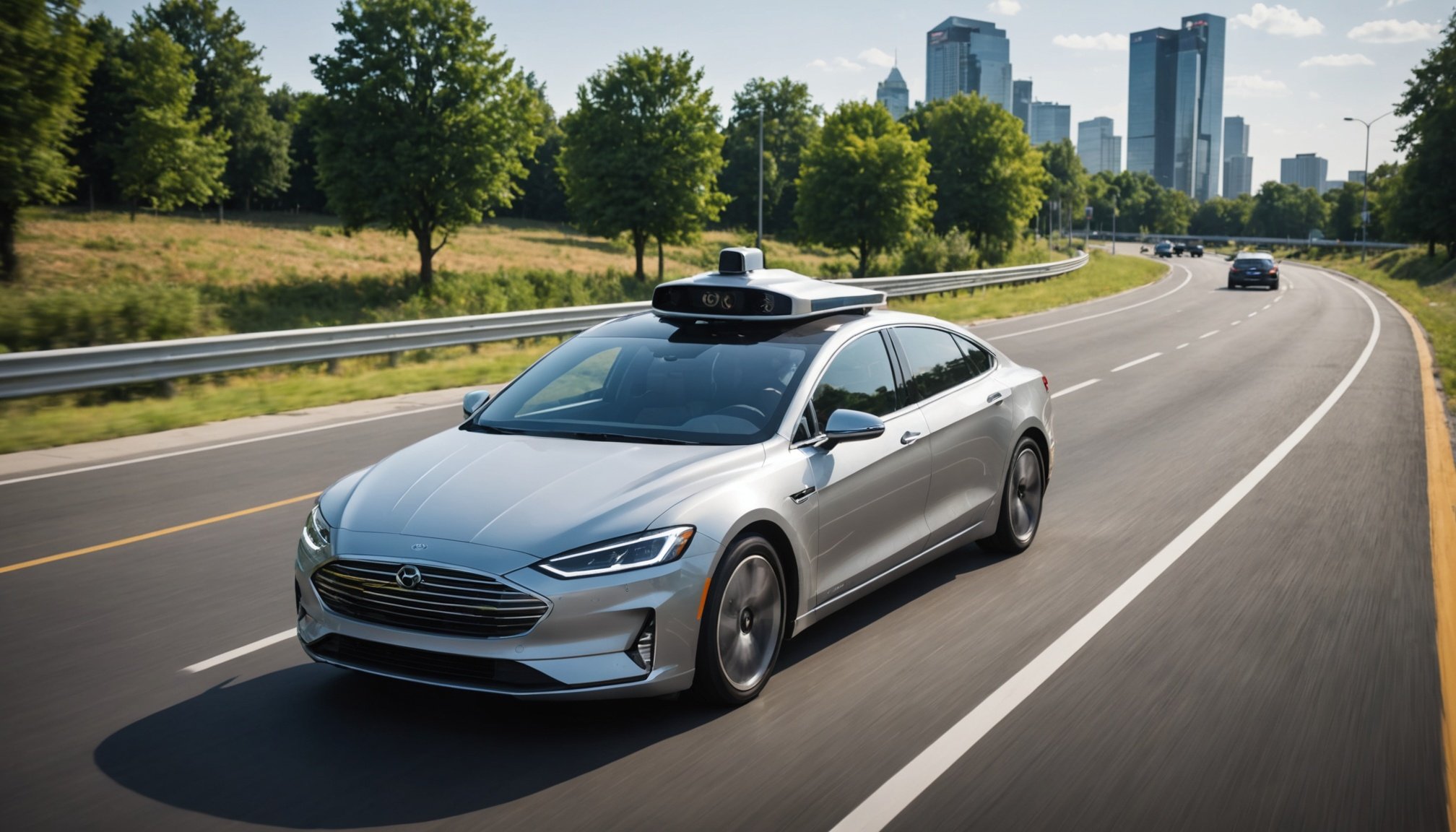Recent Innovations in Autonomous Driving Technology
In recent years, the autonomous driving innovations have transformed the landscape of the automotive industry. The latest technology in vehicles features an impressive integration of Lidar, cameras, and AI algorithms. These technologies are the backbone of driverless technology advancements, providing vehicles with the capability to navigate with minimal human intervention. Lidar systems offer precise topographical mapping, while advanced cameras deliver high-definition imaging. Coupled with sophisticated AI algorithms, they ensure a comprehensive understanding of the surroundings.
Regulatory changes have played a significant role in shaping the development of these technologies. They establish guidelines ensuring the safety and reliability of autonomous vehicles, influencing manufacturers’ approaches to innovation. These regulations are crucial for balancing technological advancements with public safety concerns. The impact of policy adjustments is evident as industry players align their developmental strategies to comply with evolving standards.
Topic to read : Cutting-Edge Automotive Tech: What Every Car Enthusiast Needs to Know
Moreover, the collaborative efforts within the industry foster a breeding ground for innovation. By understanding the importance of these developments and the influence of regulatory frameworks, stakeholders can better navigate the complexities of autonomous vehicle technology and contribute positively to its future trajectory. The ecosystem around these technologies continues to advance rapidly, promising transformative effects on transportation.
AI’s Role in Automotive Design
The integration of AI in automotive design is reshaping how vehicles are conceptualised and developed. Through artificial intelligence automotive trends, manufacturers achieve unprecedented precision and efficiency. Notably, machine learning design applications enable rapid prototyping by simulating thousands of scenarios in a fraction of the time traditional methods require.
Also to read : Driving Towards Sustainability: How the Automotive Sector is Embracing Climate Change Adaptation
One standout example is Tesla, known for its innovative approach to AI integration. Tesla uses machine learning to streamline design processes, enhancing both vehicle function and aesthetics. These cases of successful AI integration highlight the potential for creativity and adaptability in automotive design.
Benefits of AI-driven design methodologies are substantial. They offer improved efficiency, reducing the time from concept to production. Additionally, AI assists in optimising aerodynamics, energy usage, and safety features by analysing vast datasets, leading to more efficient vehicles overall.
While AI is driving forward design efficiencies, the human touch remains crucial. Designers benefit from AI insights but ultimately steer creative decisions to ensure vehicles meet diverse consumer expectations. The embrace of AI in design signifies an evolving automotive industry, blending cutting-edge technology with human ingenuity. This synergy promises to revolutionise vehicle design processes, heralding an era of innovative and responsive automotive creations.
Industry Forecasts for Autonomous Driving and AI Integration
In the future of autonomous driving, predictions anticipate significant milestones within the next decade. Experts foresee a transformative impact as greater adoption occurs due to advances like AI trends in automotive, such as machine learning and data analytics, enhancing vehicle automation.
Automotive industry forecasts reflect a continued growth in AI-driven innovations. As the technology matures, it is expected to lead to increased safety, efficiency, and consumer acceptance. With AI’s rise, manufacturers are likely to see improvements in predictive maintenance and fleet management, thus reducing operational costs and increasing reliability.
A key factor driving these developments is the synergy between AI and autonomous driving technologies. AI facilitates real-time decision-making processes, enabling vehicles to adapt swiftly to dynamic environments. This capability is crucial for navigating complex traffic conditions with precision, minimising accidents and enhancing road safety.
Market trends indicate consumer demand for enhanced connectivity and smarter in-vehicle experiences, further fueling AI adoption. As these trends evolve, they steer the direction of automotive innovations, prompting stakeholders to align with consumer expectations and technological progress, ensuring a cohesive evolution of autonomous and AI-integrated vehicles.
Practical Implications for Automotive Manufacturers and Designers
With the implications of autonomous driving, automotive manufacturers face numerous challenges as they adapt to technological advancements. A primary concern is navigating the complex regulatory landscape, which requires balancing innovation with strict safety standards. Maintaining compliance while integrating cutting-edge technology can be daunting but is necessary to enhance consumer safety and satisfaction.
To stay competitive, manufacturers must develop strategies for incorporating autonomous features and AI into new vehicle models. This involves not only understanding ongoing AI applications in design but also foreseeing industry trends. Researching and adopting the latest innovations ensures manufacturers meet consumer demands for connected, efficient vehicles.
Manufacturers are increasingly focused on refining user interfaces and enhancing the driving experience, ensuring that technological advancements translate into tangible benefits for consumers. For designers, this means crafting aesthetically pleasing interfaces that also boast unparalleled functionality. The challenge lies in seamlessly blending intuitive design with advanced technology.
Incorporating autonomous features and AI-driven solutions into vehicle design requires a flexible approach to production and development. By fostering collaboration and continuous learning, manufacturers and designers can successfully address these challenges and create vehicles that align with modern expectations, securing their foothold in an evolving market.
Visual Innovations and Case Studies
In recent years, the automotive industry has seen a surge in visual innovations in automotive design. With a plethora of technologies becoming available, design examples in autonomous vehicles showcase an exciting blend of aesthetics and functionality. These case studies in car design demonstrate how emerging technologies enhance user experience while maintaining a focus on safety and practicality.
Innovative autonomous vehicle designs highlight the intersection of sleek aesthetics and cutting-edge technology. For instance, cars like the NIO ET7 make use of intuitive interfaces and holographic displays to offer drivers a futuristic experience without compromising safety. These designs optimise form and function, suggesting new possibilities for vehicular aesthetics.
Moreover, the role of emerging technologies is pivotal in these innovations. Augmented reality (AR) dashboards and interactive lighting systems are just a few examples of how upcoming technologies are reimagining vehicle interiors. These AR systems provide real-time information to users, vastly improving the driving experience.
The challenge for designers lies in ensuring that such innovations are not just visually striking but also functionally enriching. By focusing on both aesthetic appeal and technological utility, design-driven autonomous vehicles promise a comprehensive enhancement of both user experience and road safety.
Staying Competitive in the Evolving Automotive Landscape
Navigating competitive automotive trends demands agility as firms strive to embrace rapid technological changes. Staying ahead in car manufacturing is no small feat when faced with evolving autonomous and AI enhancements. To rise above, companies must foster adaptability through continuous learning. Engaging in ongoing education programs allows teams to harness new technologies efficiently, avoiding obsolescence in the fast-paced market.
Embracing networking and collaboration opportunities is equally vital. By forming strategic partnerships, manufacturers can share insights and resources, boosting industry innovation. Collaborative research initiatives not only distribute knowledge but also spur advancements, aligning stakeholders towards common goals.
Moreover, leveraging networking can lead to technology exchanges and joint ventures, enhancing competitiveness. As AI and autonomous technologies continuously develop, their integration necessitates a proactive approach.
Focusing on navigating automotive technology changes by investing in R&D is paramount. Exploring new materials, methods, and technologies ensures that manufacturers are at the forefront of innovation. This strategy cultivates resilience and readiness to meet consumer demands.
Proactively engaging in these practices not only ensures viability but also positions companies as leaders in an industry poised for monumental change. Firms that prioritise nimbleness and collaboration will thrive in this dynamic landscape.

